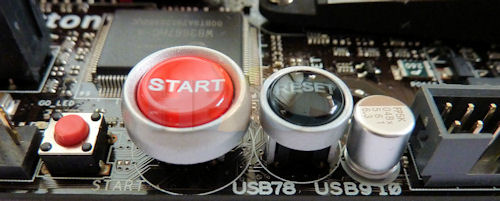Small and powerful, much like Yoda
We're going to have to wait a while before we see any brand-new chipsets and motherboards on the Intel front, which will probably arrive in the guise of boards supporting next-generation Sandy Bridge processors.So what's a manufacturer to do with its current arsenal? ASUS sees the interim gap between chipsets as reason enough to update its offerings with the latest technologies. A case in point is the overhaul of its Rampage GENE II board for the X58 chipset, now released in the third incarnation.
We took a look at the microATX-sized Rampage GENE II just over a year ago and concluded that it was a good choice if you needed extreme power in a smaller-than-usual form factor, albeit with an unenviable street price of £200.
The Rampage GENE III now takes over the performance mATX segment of ASUS' catalogue. Still arriving with a retail price of £200, including VAT, what's changed?
First off, the GENE III just looks so much nicer than its direct predecessor. The red-and-black colour scheme works really well, we think, and gives the board a premium look straight off the bat.
The overall layout is fundamentally the same as the GENE II, and ASUS manages to include six DIMM slots - now able to handle DDR3-2,200MHz memory - and yet provides ample room around the CPU socket to mount big-ass coolers. In keeping with mATX tradition, the battery is mounted vertically, at a slight angle this time.
Keeping a similar layout means that the board, whilst chock-full of features, doesn't feel overly cramped - an impressive feat for a mATX offering. ASUS also throws in Probelt points that enthusiasts can hook multimeters up to.
Be aware, however, that the GENE III gives up on providing an IDE connector, so it may not be a good fit if you need to use older devices.
The first major technology departure between boards is the inclusion of SATA 6Gb/s support by way of a Marvell 9128 controller. The two red-coloured ports, to the right, will come in useful if connecting super-fast SSDs such as the Crucial C300.
Audio, too, get a boost, and the GENE III is home to SupremeFX X-Fi v2, providing EAX 5.0 and THX TrueStudio compatibility.
Slot layout is the same, that is, two x16 PCIe, a single PCIe x4, and a conventional PCI. The two longer slots support both two-card CrossFire and SLI at full bandwidth speeds.
The X58 IOH heatsink was large on the GENE II, but now it's positively huge on this model, and it should bode well for those that want to overclock their Core i7 CPUs.
ASUS keeps decent clearance between the DIMM slots and primary graphics card, and even having a large heatsink - the Core i7 980X's here - doesn't impede the memory slots.
There's a bevy of red LEDs beside the main power plug, and they act as a rudimentary debug system when the system is running through the POST sequence
USB 3.0 is very much the flavour of 2010 as far as premium boards are concerned, so ASUS grabs the ubiquitous NEC 7200 controller chip and plonks it to the left of the topmost x16 PCIe slot.
Maybe it's the child in us, but we like to see big buttons on motherboards, and these are carried over from the GENE II. The 'Start' button produces a satisfying click when pressed. The 'Go' button, to the left, provides one-click overclocking when in Windows, with options set in a subscreen of the BIOS, including voltages and frequency - a mini-BIOS.
The blue-coloured USB 3.0 ports are new, obviously, and there's a specific USB port, positioned vertically, that makes use of the on-the-fly overclocking through the iROG chip. Users expecting to see eSATA on the I/O section, present on the GENE II, will be left disappointed as the board does without. Both the IDE and eSATA ports are powered by a JMicron controller on the GENE II, and it's simply not here on the newer design.
Testing the motherboard in a chassis, we found the clear rear-mounted clear CMOS button a real boon when the system was pushed too far. Having to move jumpers around is so, well, 2009.
Not skimping on extras on a £200 board, eight SATA cables are included, of which two are specifically marked as 'SATA6'.
Summary
The ASUS Rampage GENE III updates the company's mATX X58 chipset-based offering by including a modern look, USB 3.0 and SATA 6Gb/s connectivity, upgraded audio, but does without IDE or eSATA.
















